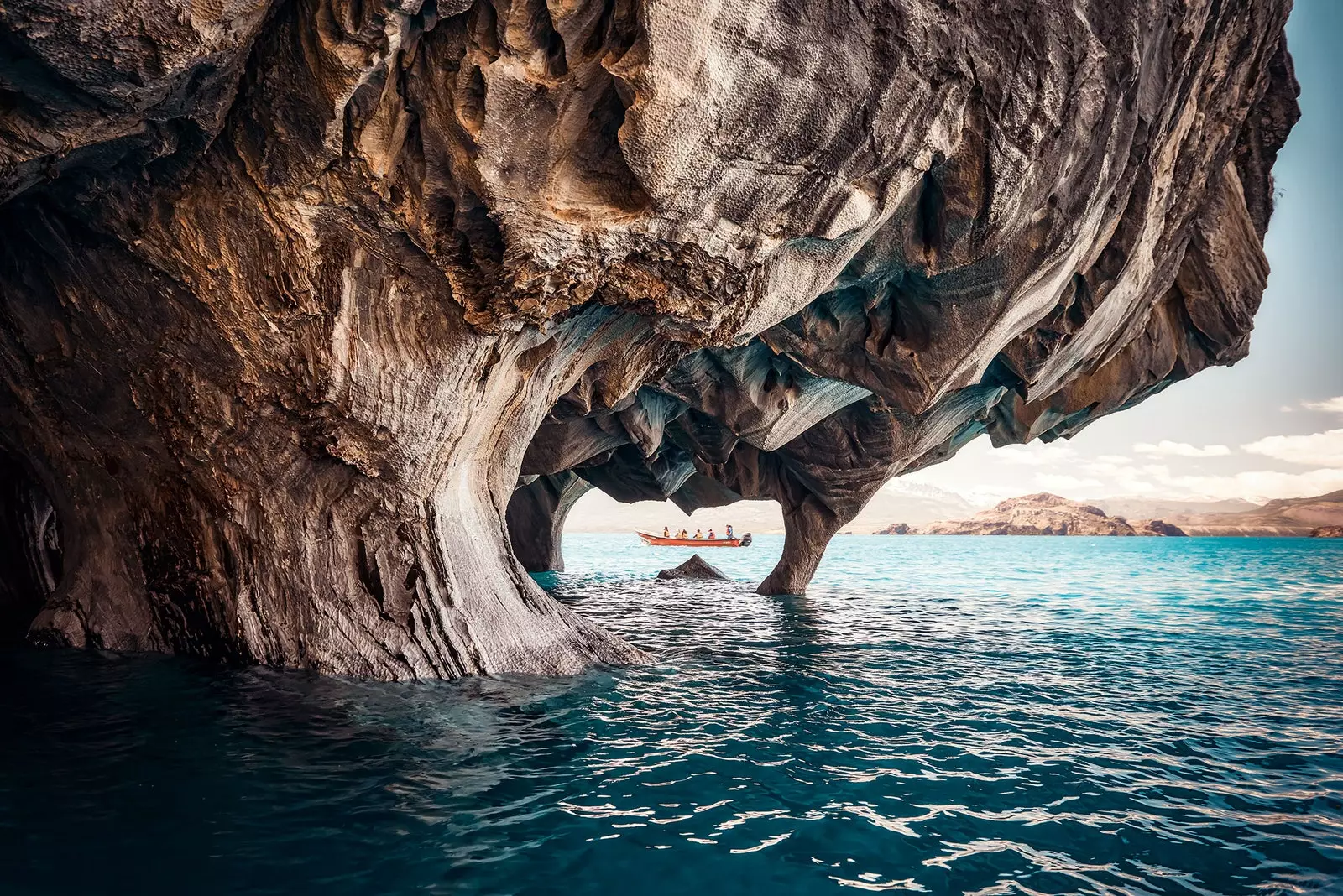
The Marble Chapels, a nature sanctuary on the shores of Lake General Carrera
Nobody is prepared to come across a cougar a few meters away. It's just a few seconds. The first two you think that it is any other animal, for three more you are paralyzed and, the rest of the time that the feline grants you, you dedicate yourself to enjoying one of the most exciting moments of your life, an exceptional moment that is difficult to repeat.
The territory of an adult male can cover a thousand square kilometers and Few people in the area say they have ever seen it.
He appeared in an area devoid of vegetation, walking slowly, with the security of someone who knows that he has the upper hand. Our eyes met for an instant that seemed eternal. and, when he considered that he had shown himself enough, he broke into a light trot to disappear into a nearby grove.
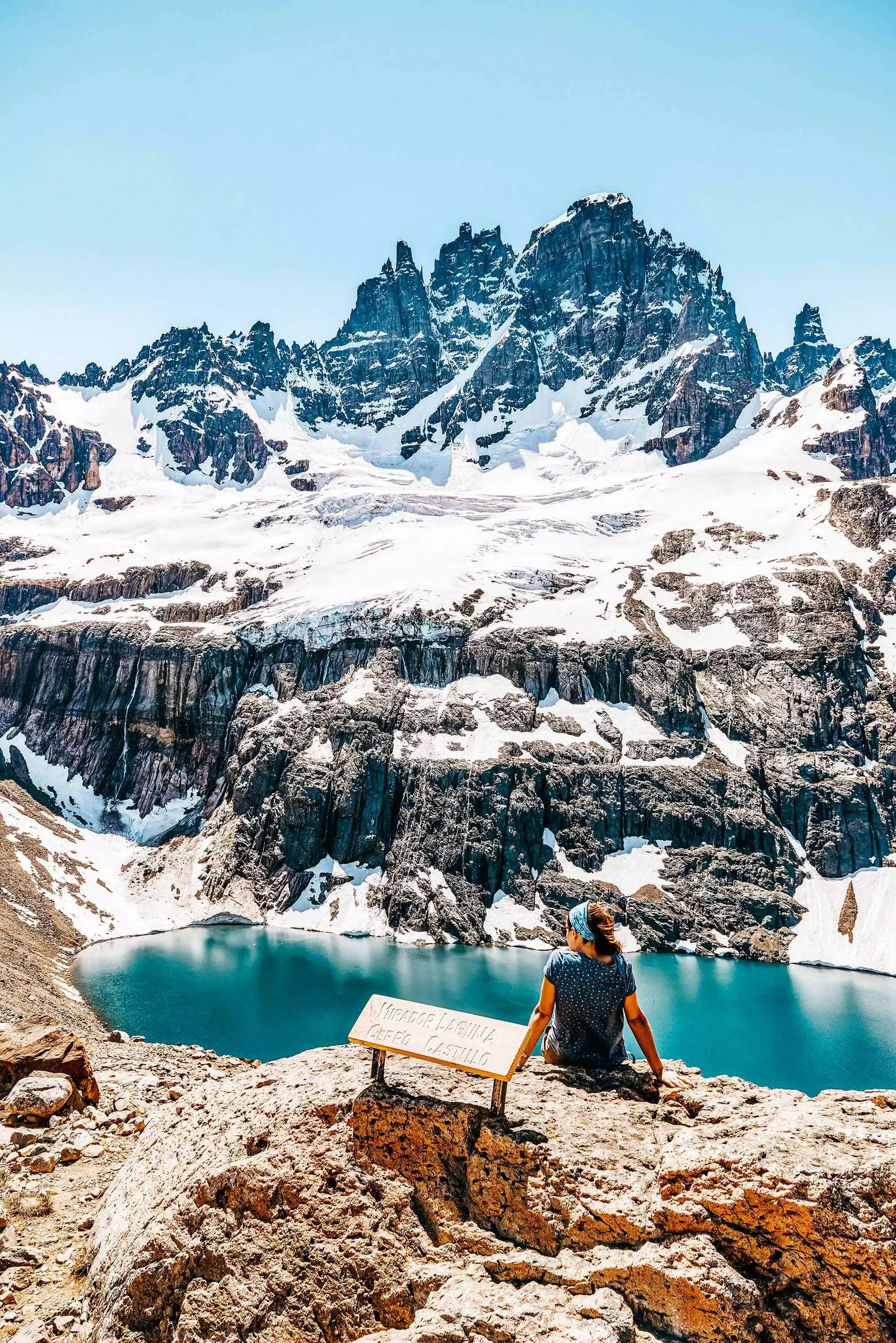
Lagoon at the foot of Cerro Castillo
Seconds later, while trying to assimilate what happened -and only now I realize that I had not done it until this moment in which I write it-, I see a huemul, the Andean deer, jumping in the opposite direction from which the puma had appeared.
my promotion to the lagoon of Cerro Castillo I was crossing a place where huemules passed by and, surely, the puma was on the lookout for a dinner that we had just spoiled for it.
The rest of the way was not the same; nor the sublime landscape, nor the presence of the mountain that gives its name to the park, nor the green of the lagoon, of an impossible hue. Cougar, cougar, cougar, I kept repeating in my head.
During the descent we stopped at the place where we had left the horses and Cristian, our guide, a big gaucho with broad shoulders and a firm handshake, he prepared us a delicate table of cheeses, grapes and nuts on a pair of mounts arranged on a log.
The time was spent chatting about the fortuitous meeting and listening to stories about Patagonia.
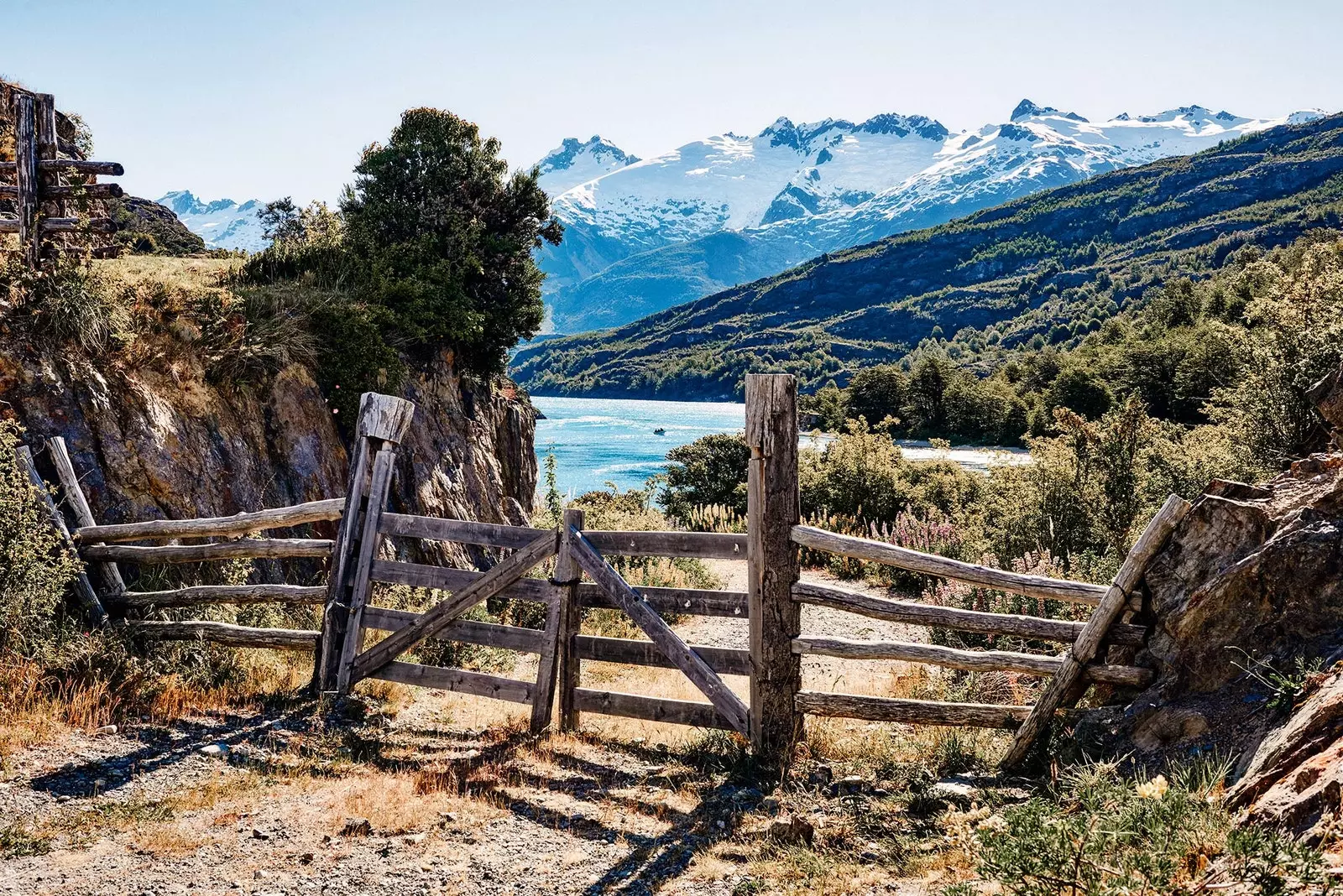
Views of Lake General Carrera
Few names evoke so much in the imaginary traveler as Patagonia, a region so vast that it can only be covered in dreams.
Nine letters that many writers have tried to contain in a book, as if Patagonia could fit in two hundred pages. For others it was enough to imagine it; just the mention of it was enough to send her mind soaring. For example, Blaise Cendrars , who was never here, he wrote in trans-siberian prose : "Only Patagonia remains, the Patagonia that suits my immense sadness, Patagonia and a trip to the South Seas."
Others who never set foot on this vast territory were the Norwegians Edvard Munch and Hans Jaeger who, during the drunken conversations that the painter and the writer had while Jaeger was imprisoned for scandal, They decided that they were going to found an erotic colony in Patagonia.
But I had not come here to feed melancholy or to create camps of debauchery. My goal was to go the Aysen region in search of some of the lesser-known landscapes of the northern patagonia –the General Carrera Lake, the Marble Chapels, the San Rafael Lagoon, the Cerro Castillo and Patagonia National Parks or the Baker River–, and meet Kristine McDivitt , the widow of Douglas Tompkins, to tell me about one of the greatest acts of philanthropy and love for our planet carried out: the donation of more than 400,000 hectares to the Chilean state with the condition that the country convert them into national parks and expand other existing ones.
Along with other previous donations, this has led to the creation of a 17 national parks along the 2,800 kilometers that go between Puerto Montt, in the Los Lagos region, and the Beagle Channel and Cape Horn.
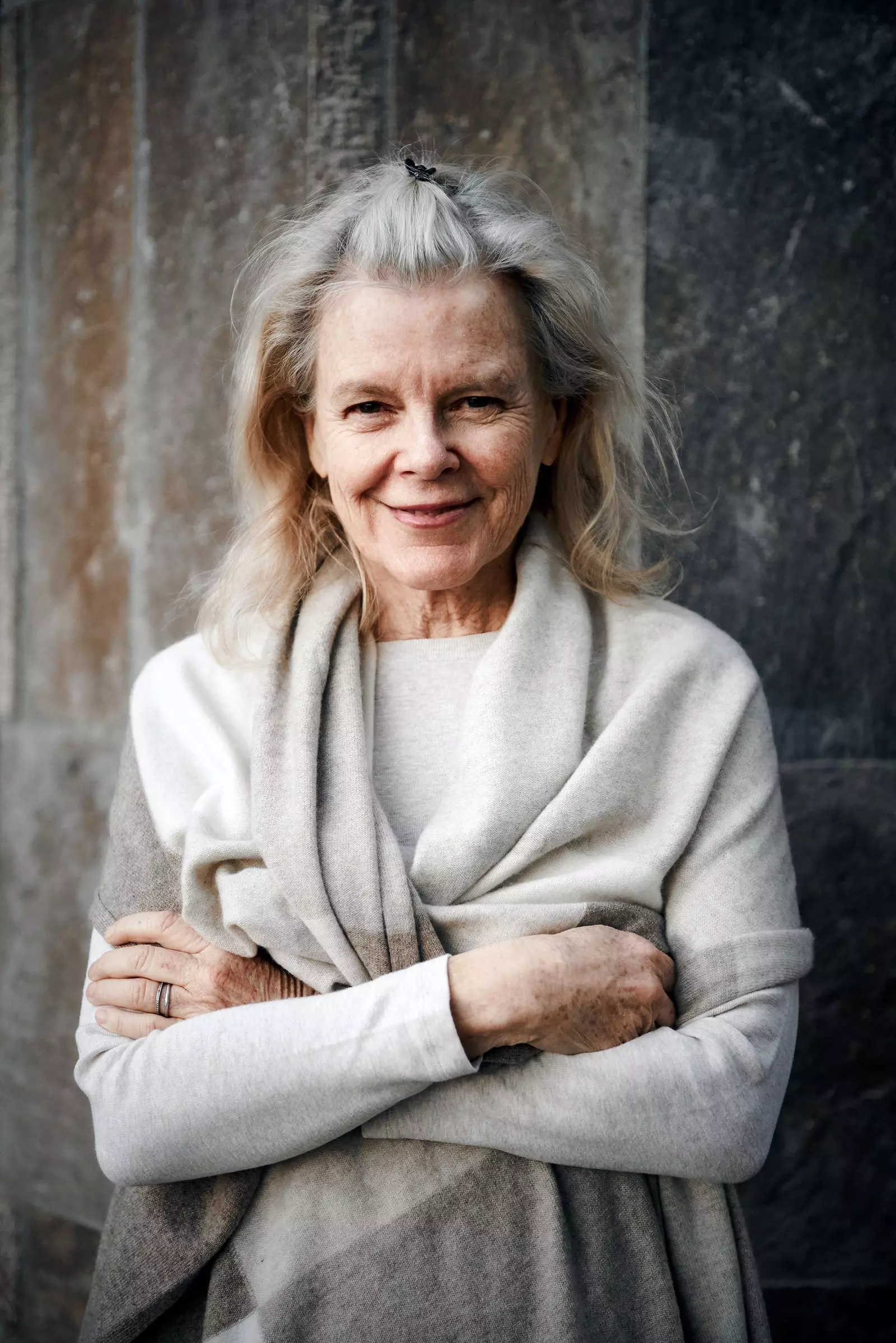
Kristine McDivitt
"When you have a lot of money you can buy a private jet or a complete ecosystem to protect the planet." With this phrase, Kristine received me at her house in the Chacabuco Valley, the heart of the new Patagonia National Park.
Things have changed a lot since they bought the first piece of land in Reñihue. Back then, Tompkins asked, somewhat naively, if the purchase included the volcano in front. The answer could not be more obvious: "Yes, sir, includes the volcano."
The purchase of land by two foreigners aroused all kinds of suspicions, Kristine recalls: “They said we wanted to create a new Zionist state (even though we grew up Anglicans); that we had crossed the African lion with the cougar to make a superspecies that would kill cattle and replace them with North American buffalo; that we wanted to keep the water; that we were going to create a cemetery for nuclear waste...”.
With the same eye that Doug created tech apparel for The North Face and t-shirts at Esprit, brands he co-founded and which made him his fortune, he imagined national parks from the air, while flying over Patagonia in his plane.
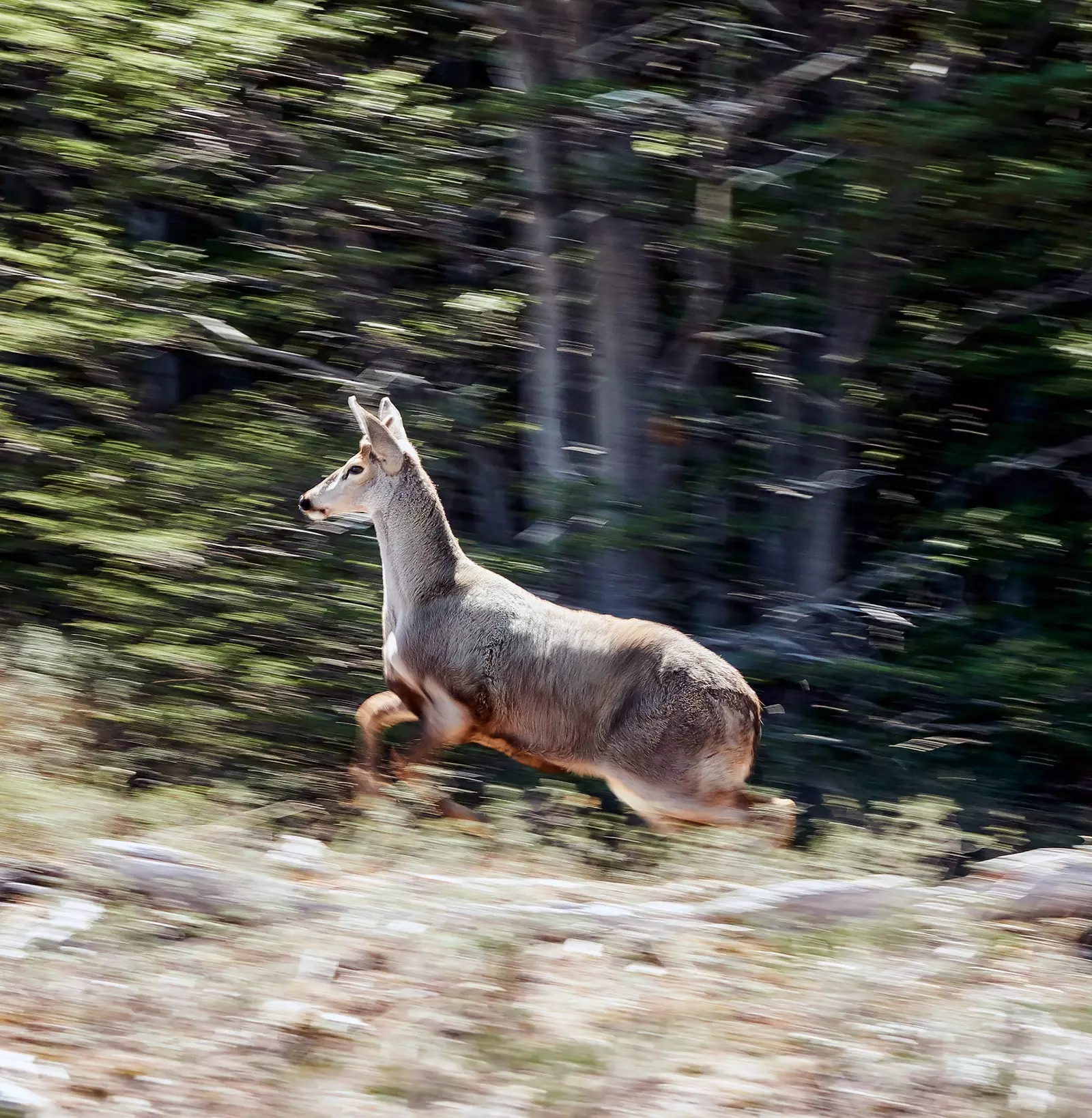
A female huemul
And she dedicated herself to doing a kind of “industrial sabotage”: when she saw a stretch of river where a bridge could be built, she tried to buy the land on both sides to stop the arrival of progress. Without her efforts, they probably would have filled Patagonia with dams.
Birdie and Lolo, Picaflor and Águila, Doug and Kris, three pairs of names for the same couple. The death of Douglas Tompkins in a kayaking accident on Lake General Carrera in 2015 accelerated the signing of the donation agreements, although the landscape had already been protected for some time.
The shepherds who worked in the Chacabuco Valley are now in the conservation projects and very close to the place where Tompkins is buried we find a garden of biointensive agriculture or “on a human scale”, as Francisco Vio and Javier Soler prefer to say, those responsible for growing what is served in the restaurant.
We spent the afternoon getting to know other of the wildlife protection and reintroduction projects of the Tompkins Foundation, such as the captive breeding of the rhea, brought from different parts to avoid the consanguinity that affects the species.
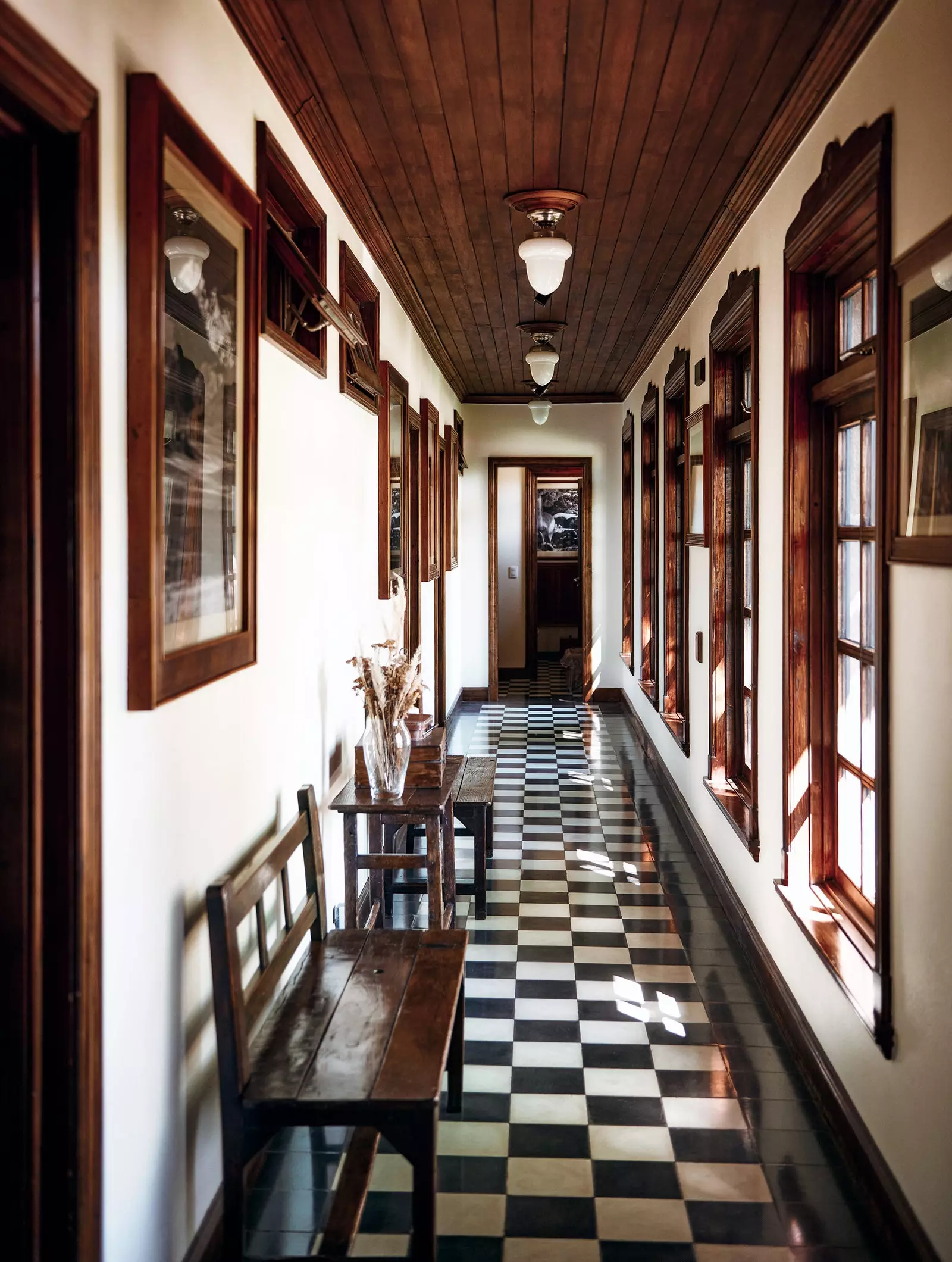
Interior of the Valle Chacabuco Ranch
In the park there is several accommodation options, all respectful with the environment. For the Ranch Valley Chacabuco , the main lodge I stay in, used recycled materials of old sheds and stones from a quarry in the park itself.
From the window I see dozens of guanacos pass by, some waiting for their young, the chulengos; the last light of the afternoon is modeling the mountains and dyes them an intense red. I go to bed thinking about the reasons that lead a couple to invest their fortune in a purpose that will bear fruit in the coming centuries, seeking economic development based on conservation and the benefit of local communities.
Perhaps the answer lies in something Kristine told me: “Whoever you are, whatever your interests, you get up every morning and do something. You take action, join the battle and fight for a human society that lives in balance with the natural world.”
A short distance from the Chacabuco Valley is the ** Tamango National Reserve ,** today part of the Patagonia National Park. In the cochrane river jetty we met Elvis, the boatman with whom we were going to navigate the southeastern limit of the reserve.
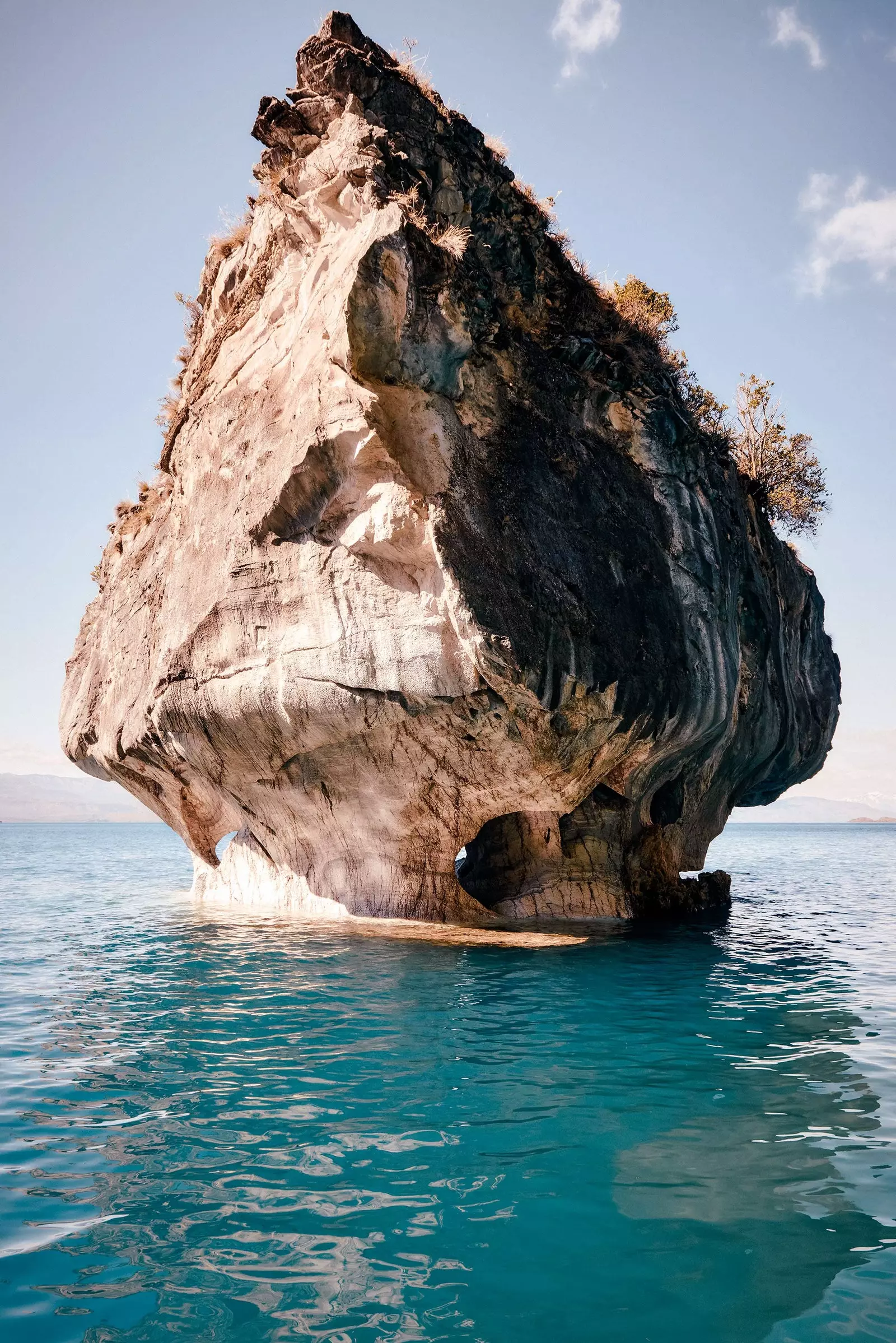
One of the curious geological formations in the Marble Chapels
On the riverbank, a huemul sheltered in the shade from the heat that at that time of day marked its maximum. Upon arrival, the landscape made us speechless: the snowy peaks, reflected in the lake, like in a mirror and, in the background, where the lake changes its name, ** Argentina .**
In the afternoon we change the calm waters of the lake for the savages of the Baker River, for which we make a rafting descent. Along the way, the announcement of the sale of a house with land, a piece of land as large as it can only be in Patagonia, invited one to dream with the words of the environmentalist Edward Abbey: “May your paths be winding, lonely, risky and lead you to the most spectacular views. Let your mountains rise between and above the clouds.”
in patagonia the distances never correspond to the scale of the maps or the indicators on the road. With gravel roads and a thousand stops to simply look at, here distance is measured in time.
Along the ** Carretera Austral ,** attentive to the changing Patagonian lights, the routes become delightfully long. The Austral borders the western sector of the lake General Race. The Tehuelches called him Chelenko, something like 'Troubled Waters'. Its strong waves, more typical of a sea than a lake, sculpted the Marble Chapels.
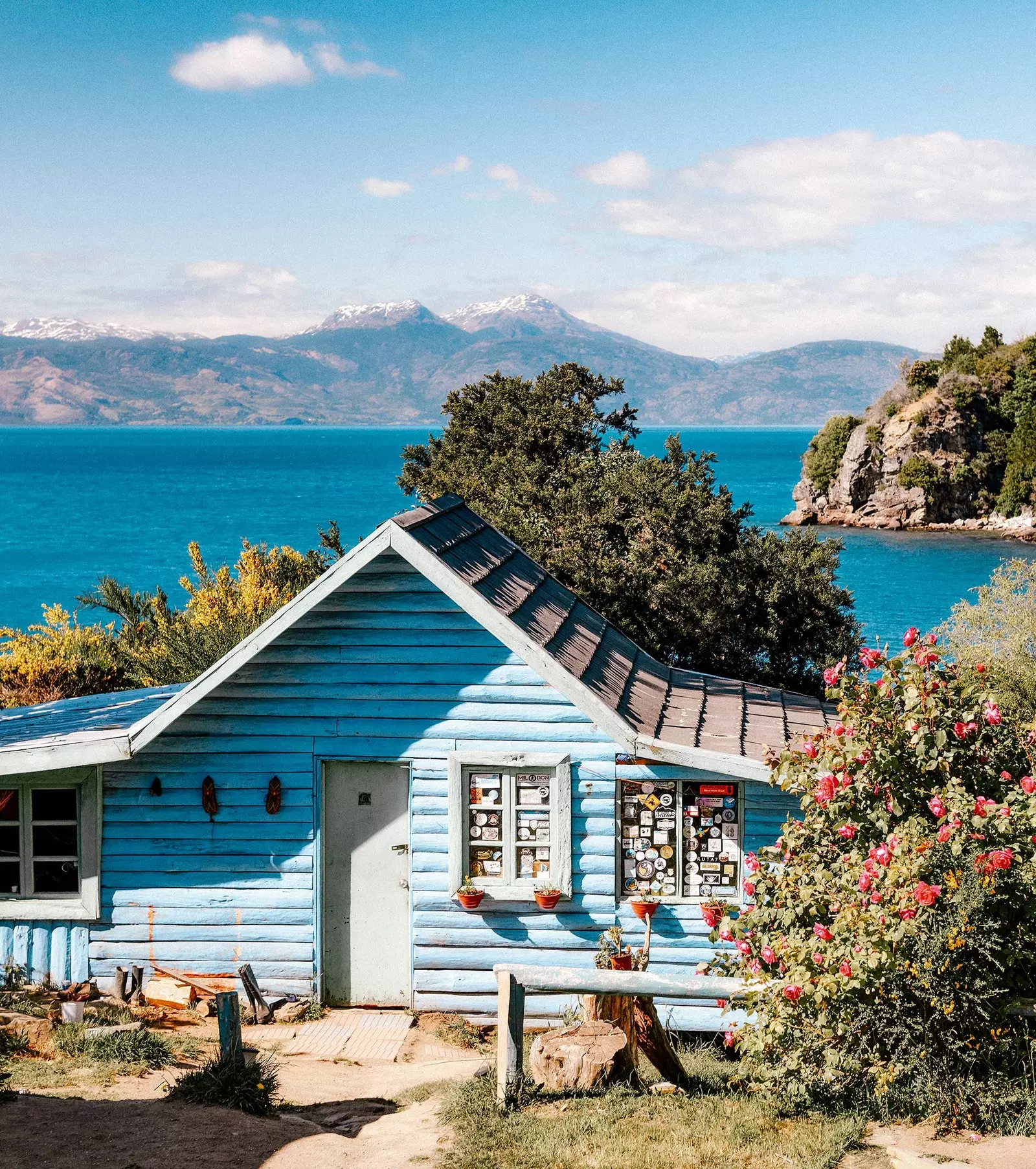
Mansa Bay House
Since Mansa Bay the boats depart to reach this beautiful whim of nature. The light and the magic of the water make the colors move in a dance of grayish blues and turquoises, worn yellows, pinks and pure whites.
The journey continued to Explorers Bay. Our guide, as if it were a litany, was naming the trees and bushes that we found along the way: lenga, coihue, ñire, raulí, notro, maitén, nalca, chilco, fuenque...
Wrapped in that light that cloudy days give, a bunch of coihues that one day formed a forest, already dead, emerged from the water like ghosts, with Mount San Valentín, the highest in Chilean Patagonia, as a backdrop.
In Bahía Exploradores a boat was waiting for us to reach the front of the glacier in the San Rafael lagoon. In the first section we navigate the river that gives its name to the bay; the waters were, this time, a whitish green, milky, due to the sediments of the glaciers that spread down the slopes and that form showy waterfalls during the melting.
To get to Estuary Cupquelan the water changes color and the waves make sailing turn into a rodeo. When Cupquelan converges with the following estuary, elephants, it becomes impossible to stand.
We regain calm Leopards Point , in what is known as false lagoon, and we spotted the first pieces of ice broken off from the glacier.
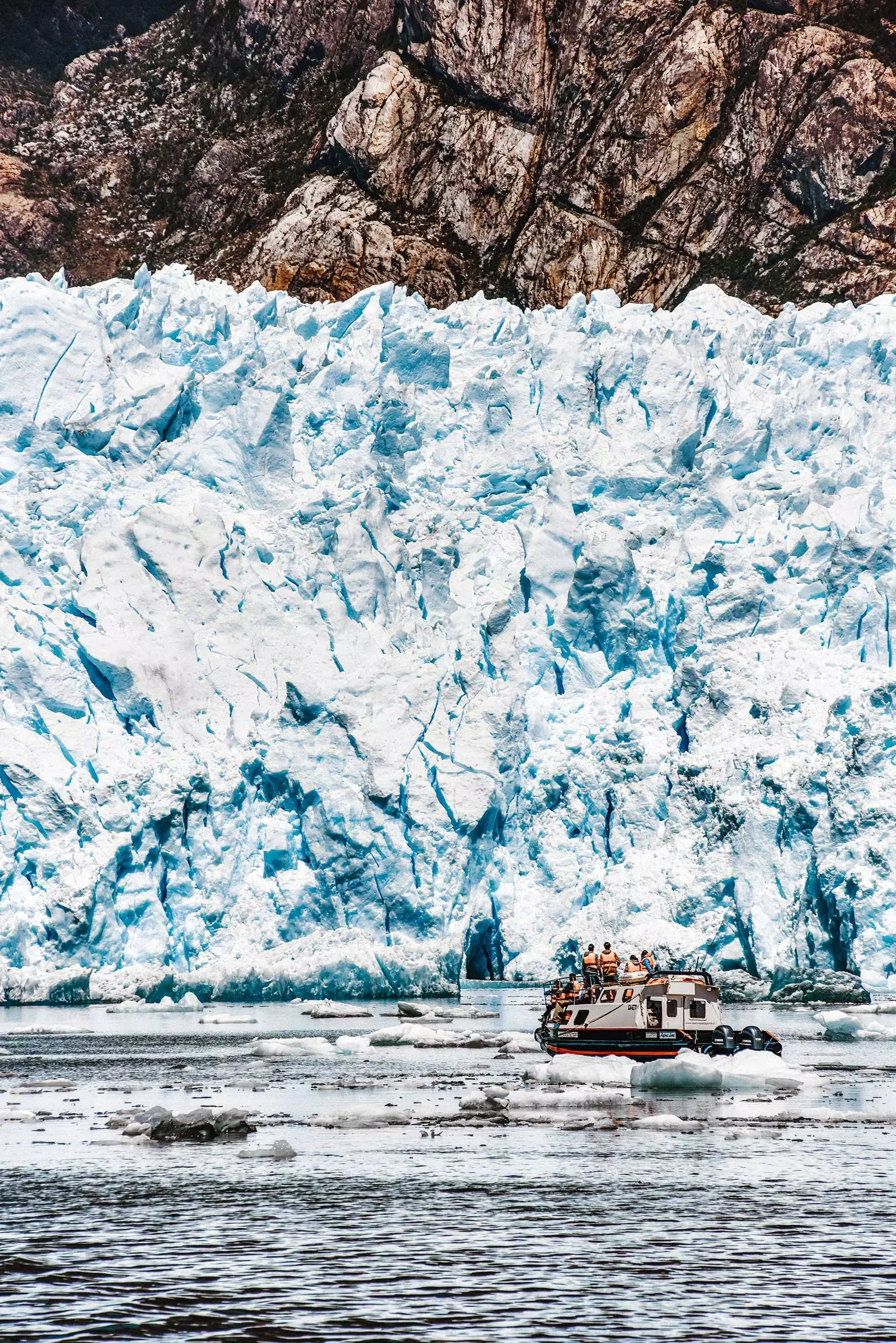
The front of the San Rafael glacier
The front of the San Rafael Glacier, in that beryl blue hue that Darwin was so excited about, is impressive. Even more so when you hear their moans and the noise produced by the pieces of ice, as big as buildings, falling into the water.
I close the circle in the D'Olbek brewery in Coyhaique, the capital of the Aysén region. Charlie Smet D'Olbecke, from a Flemish family and craft beer producer, He was the administrator of the Valle Chacabuco ranch for almost twenty years, until the Tompkins bought it as an essential part of what is now the national park.
Without having any prior idea of its elaboration, Charlie's pouring two big beers today, a lager and an ale, as well as a more curious one with berries.
His is one of those stories that usually occurs in Patagonia, a place that has implicit goals, life changes, challenges. A harsh land in which a simple can of peaches in syrup (Oso brand) was the gift of courtship between the couples that formed in the cattle ranches.
That toughness, the promise of ongoing adventures and an unconditional love for the planet They took Douglas and Kristine to settle in Patagonia. “If anything can save the world, I'd bet my money it's beauty” , Doug used to comment.
But the best answer to what Patagonia means was given to me by Kristine: “You are in front of a landscape that calls you, that feels powerful. What does Patagonia mean to me? Love".
_*This article and the attached gallery were published in the number 128 of the Condé Nast Traveler Magazine (May) . Subscribe to the print edition (11 printed issues and digital version for €24.75, by calling 902 53 55 57 or from our website ) and enjoy free access to the digital version of Condé Nast Traveler for iPad. The May issue of Condé Nast Traveler is available at its digital version to enjoy it on your favorite device. _
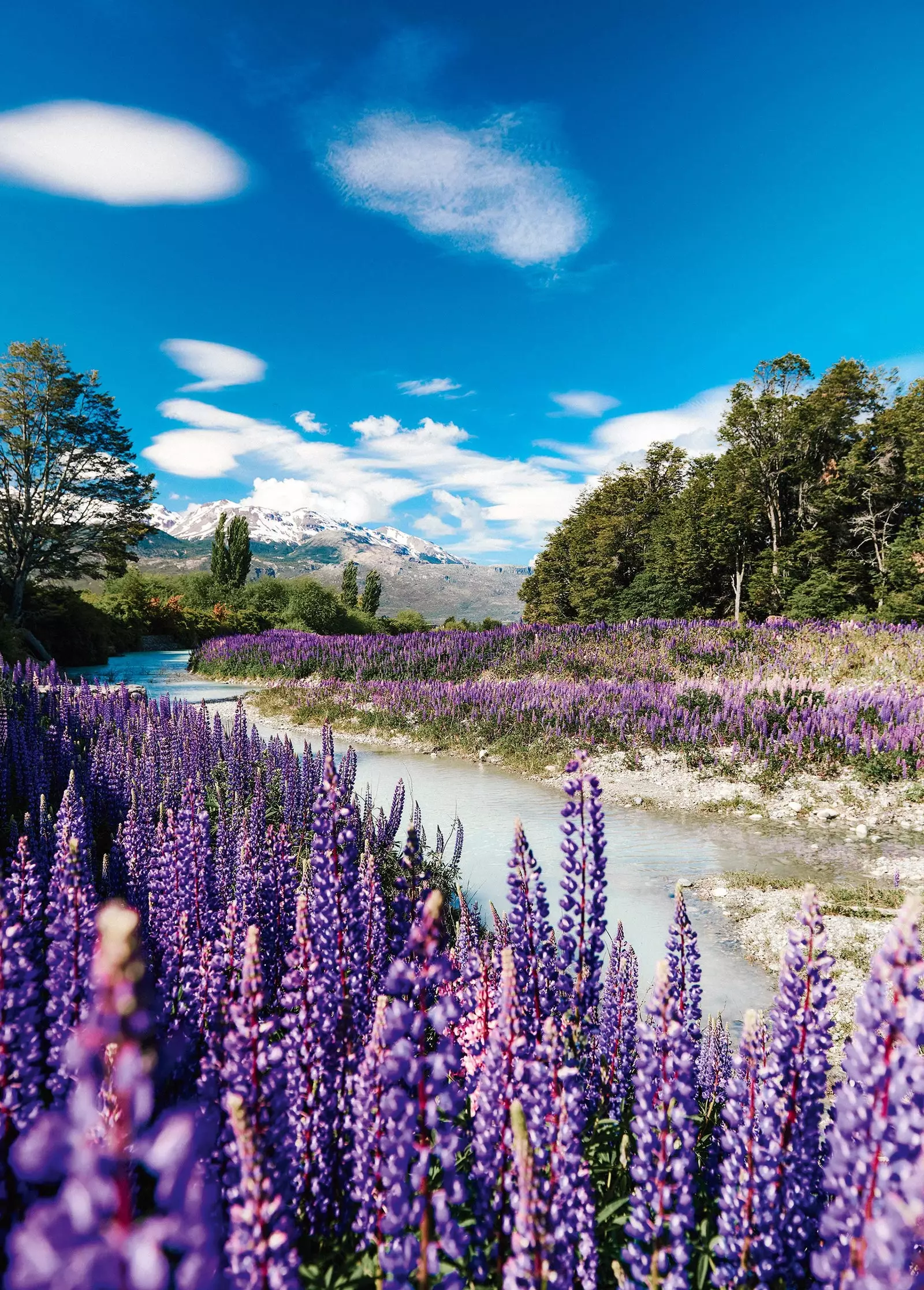
lupine in bloom
